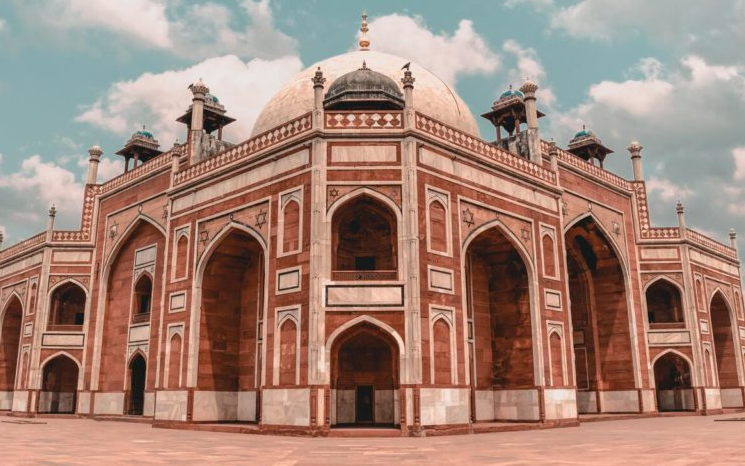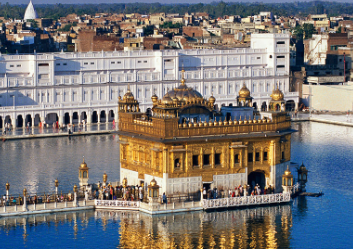The Humayun’s Tomb is a magnificent mausoleum located in the heart of Delhi, India. It was built in the 16th century by Haji Begum, the wife of the Mughal Emperor Humayun, as a tribute to her beloved husband. The Humayun’s Tomb is one of the most important examples of Mughal architecture in India and is considered to be a masterpiece of design and engineering.
The Humayun’s Tomb is situated in the midst of a beautifully landscaped garden that spreads over 30 acres of land. The tomb is constructed of red sandstone and white marble and is surrounded by a high wall. The main entrance to the tomb is through a magnificent gateway known as the Buland Darwaza.
The tomb itself is a magnificent structure, built on a platform with a height of around 7 meters. The main structure of the tomb is a square chamber that is topped by a dome. The dome is made of white marble and is decorated with intricate designs and carvings.
The interior of the tomb is equally impressive, with a large central chamber that is surrounded by smaller chambers. The central chamber houses the tomb of Emperor Humayun, while the smaller chambers contain the tombs of other members of the royal family. The walls of the chambers are decorated with intricate carvings and inscriptions from the Quran.
The Humayun’s Tomb is not just a place of historical significance, but also a place of great beauty. The gardens that surround the tomb are well-maintained and offer a peaceful retreat from the bustling city. The gardens are home to a variety of flora and fauna, including peacocks, parakeets, and butterflies.
The Humayun’s Tomb is also a popular tourist destination, attracting visitors from all over the world. The tomb is open to visitors every day from sunrise to sunset, and visitors are required to pay a small entrance fee. Inside the tomb, visitors are required to remove their shoes as a sign of respect.
The Humayun’s Tomb has undergone several renovations and restorations over the years, the most recent of which was completed in 2013. The restoration work was carried out by the Aga Khan Trust for Culture and aimed to preserve and restore the original beauty of the tomb.
In conclusion, the Humayun’s Tomb is an architectural marvel that stands as a testament to the grandeur and beauty of Mughal architecture. Its beautiful gardens, intricate carvings, and impressive domes make it a must-visit destination for anyone interested in history, architecture, or simply seeking a peaceful retreat from the bustling city. The tomb is a reminder of the rich cultural heritage of India and the legacy of the Mughal Empire, and is a source of pride for the people of India.










